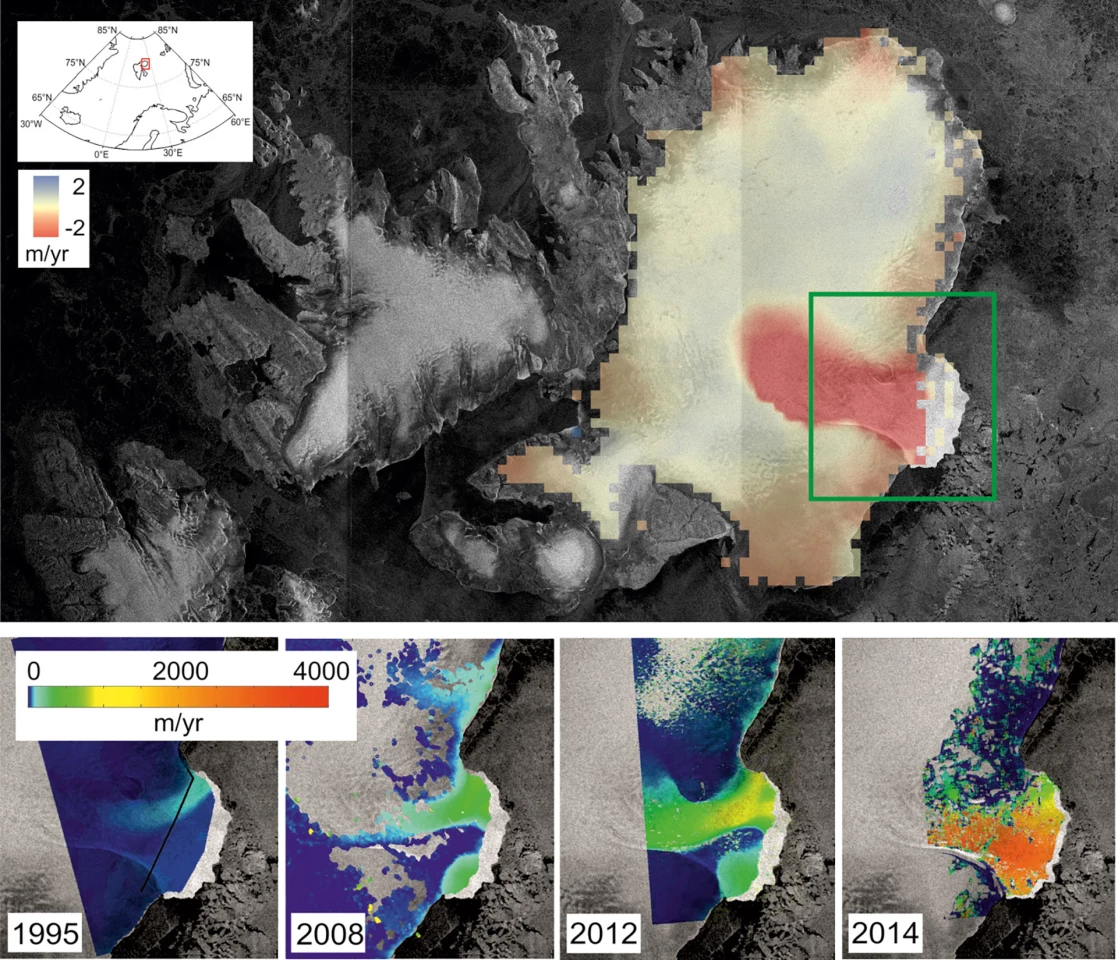Both the ESA’s Sentinel-1A and CryoSat satellites have detected a significant degree of ice loss in the Austfonna ice cap, located on Norway’s Nordaustlandet island in the Svalbard archipelago. Parts of the ice cap have thinned by as much as 50 m (164 ft) since 2012 – around a sixth of its total thickness, and the speed of the outer glacier has increased to 3.8 km (2.4 miles) per year.
The findings are the latest in a series readings over the last two decades detailing a significant increase in ice loss from the southeastern part of Austfonna. The study was led by the Centre for Polar Observations and Modelling (CPOM) at the University of Leeds in the UK, combining key data from both the Sentinel-1A and CryoSat, as well as six other satellite missions.
Aside from the thinning, the new findings show that the ice cap’s outer glacier is flowing 25 times faster than in early records, moving as much as 3.8 km (2.36 miles) per year, or half a meter (1.64 ft) per hour. The thinning has also now spread more than 50 km (31 miles) inland, putting it within 10 km (6.2 miles) of the summit.

“Glacier surges, similar to what we have observed, are a well-known phenomenon," said Dr. Mal McMillan, the lead author of the study. "However, what we see here is unusual because it has developed over such a long period of time, and appears to have started when ice began to thin and accelerate at the coast."
It’s thought that rising temperatures in the surrounding ocean observed in recent years may have sparked the coastal ice cap thinning. The team will work with existing ice flow models to further analyze the cause of the ice cap behavior in an attempt to confirm this, as well as provide improved predictions for future ice loss and sea level rise.
Missions such as the ESA’s CryoSat, which carries a radio altimeter to measure ice and sea level height, are essential in clarifying our understanding of ice loss. They allow scientists to systematically monitor ice sheets and caps, providing a much greater pool of data from which to assess future developments.
Source: ESA





